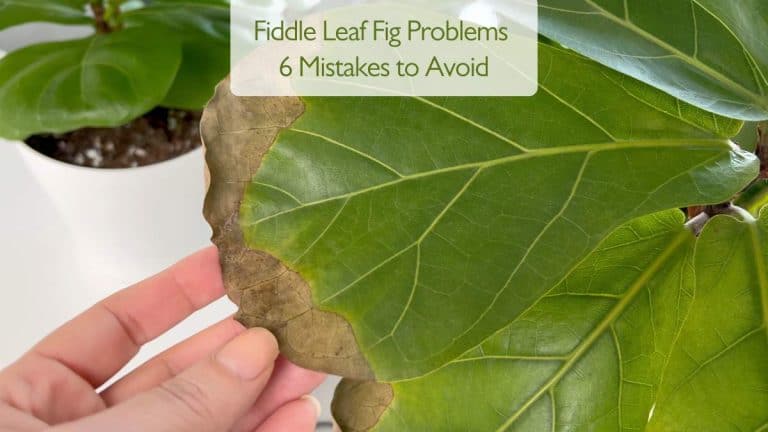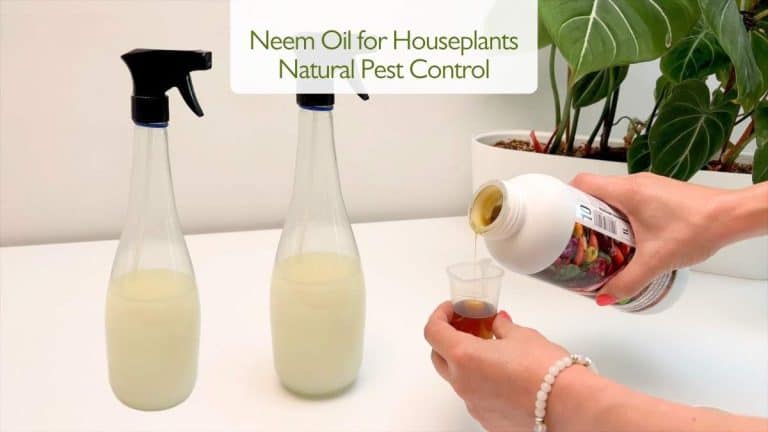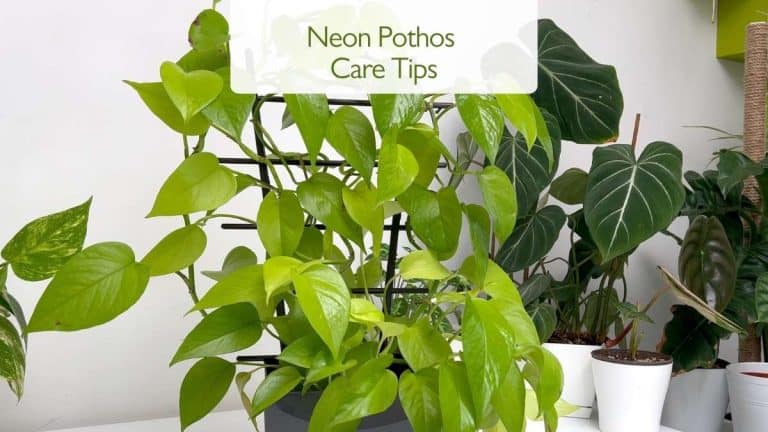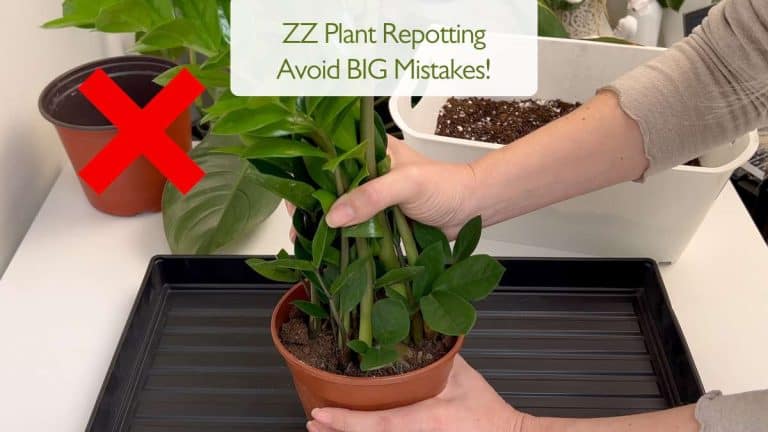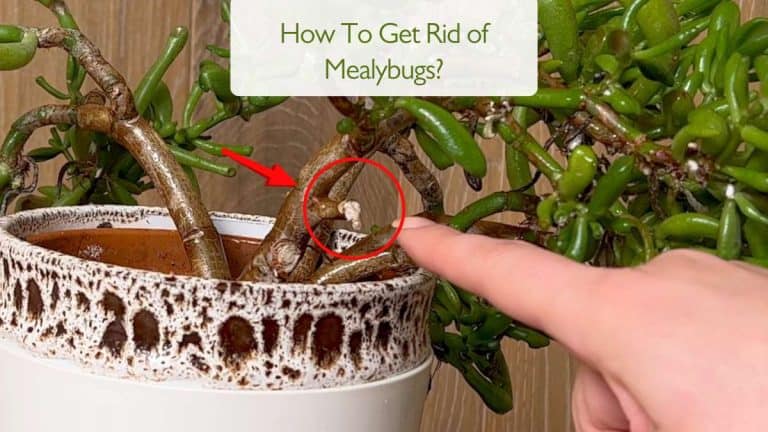Fiddle Leaf Fig Problems: 6 Mistakes to Avoid | Ficus Lyrata
Fiddle Leaf Fig problems can be frustrating for any plant lover. Fiddle Leaf Figs (Ficus lyrata) are among the most popular indoor plants, loved for their large, glossy leaves and striking presence. However, many plant lovers struggle to keep them healthy and thriving. If your Fiddle Leaf Fig is growing slowly, losing leaves, or showing brown spots, it might be making some of the common mistakes that cause Fiddle Leaf Fig problems and prevent it from flourishing.
I’ve cared for my own Fiddle Leaf Fig for years and experienced many ups and downs. Through trial and error — including propagating a new plant from a branch — I learned exactly what this beautiful plant needs to grow strong and healthy.
In this article, I’ll share the 6 most common Fiddle Leaf Fig problems and how you can avoid them to keep your plant thriving.
If you prefer a visual guide, you can also watch my detailed video below, where I cover these tips step-by-step for Fiddle Leaf Fig Problems.
Why Is My Fiddle Leaf Fig Not Growing?
Before diving into the mistakes, it’s important to know that Fiddle Leaf Figs require consistent care. Small errors can quickly lead to slow growth, leaf drop, and unhealthy leaves. These plants love bright, indirect light, steady watering habits, and stable environmental conditions. If your plant is struggling, you’re not alone. Let’s explore the key mistakes and solutions. Fiddle Leaf Fig Problems:
1. Improper Light – A Common Fiddle Leaf Fig Problems
Fiddle Leaf Figs need plenty of bright, indirect light — ideally 6 to 8 hours a day. Too little light causes slow growth, small leaves, and leaf drop. Too much direct sun can scorch leaves, creating brown, crispy edges or spots.
The best spot is near a north- or east-facing window. If you only have south- or west-facing windows, place the plant a few feet away to avoid harsh sunlight. If natural light is limited, supplement with grow lights to provide enough brightness.
Tip: Rotate your plant regularly. Fiddle Leaf Figs grow toward light and will become lopsided without rotation.
2. Improper Watering
Watering on a fixed schedule can be risky. Overwatering and underwatering both cause serious Fiddle Leaf Fig Problems.
Overwatering suffocates roots, leading to root rot, yellowing leaves, and leaf drop.
Underwatering causes dry, crispy leaves and stunted growth.
The ideal approach is to let about half the soil dry out between waterings. Test moisture by inserting your finger a few inches into the soil — if it feels dry, it’s time to water.
Tip: Use a moisture meter if unsure. It’s safer to underwater than overwater because root rot is difficult to reverse.
3. Edema Problems (Blisters on Leaves)
Sometimes you might notice small raised bumps or blister-like spots on leaves — this is edema. It happens when the plant absorbs more water than it can use, causing cells to swell and burst. A Common Fiddle Leaf Fig Problems
Edema often appears:
- When watering while the soil is still damp
- In environments with high humidity and poor air circulation
- In cooler temperatures
Though not a disease, edema signals an imbalance in watering or environment.
How to fix it:
- Let the soil dry out more between waterings
- Improve air circulation around the plant
- Reduce humidity slightly if it’s too high
Existing edema marks won’t disappear, but new leaves will grow healthy with proper care.
4. Temperature and Humidity Issues

Fiddle Leaf Figs are tropical plants that prefer:
- Stable temperatures between 65°F and 80°F (18°C–27°C)
- Humidity levels around 40% to 60%
Avoid placing them near drafts, heaters, air conditioners, or cold windows. Sudden temperature changes can cause leaf drop and slow growth.
Dry air, especially in winter with indoor heating, causes brown, crispy leaf edges or curling leaves – Fiddle Leaf Fig Problems.
How to maintain ideal conditions:
- Keep the plant in a stable environment away from temperature fluctuations
- Use a humidifier or place a water tray with pebbles nearby to increase humidity
- Misting leaves can help temporarily but isn’t a long-term solution
5. Wrong Soil Mix and Pot – A Common Fiddle Leaf Fig Problems
The soil and pot choice are crucial for healthy roots.
Fiddle Leaf Figs need well-draining soil that retains some moisture but doesn’t stay soggy.
A pot with drainage holes is essential to prevent water buildup.
Avoid heavy, compacted soil or pots without drainage — both cause root problems. When repotting, choose a pot about 2 inches larger in diameter.
6. Improper Fertilizing
Fertilizer fuels healthy growth, but over- or under-fertilizing causes problems.
No fertilizer means slow growth, pale or yellow leaves, and weakness.
Too much fertilizer can burn roots, causing brown leaf edges and leaf drop.
Fiddle Leaf Figs actively grow in spring and summer. Use a balanced liquid fertilizer diluted to half strength every 4 to 6 weeks during this period. Avoid fertilizing in fall and winter when growth slows.
If you suspect over-fertilizing, flush the soil with water to remove excess salts. Read more about homemade organic fertilizer.
Final Tip: Trimming Damaged Leaves – A Common Fiddle Leaf Fig Problems
Leaves with brown edges won’t recover, but trimming the damaged parts helps prevent further drying and improves the plant’s appearance.
Conclusion
By avoiding these six common mistakes, you’ll give your Fiddle Leaf Fig the best chance to grow big, strong, and healthy. Remember to provide the right light, water carefully, maintain stable temperature and humidity, use proper soil and pots, and fertilize correctly.
With patience and consistent care, your Ficus lyrata will thrive and become a stunning focal point in your home.
Watch the detailed video guide below for a step-by-step visual on caring for your Fiddle Leaf Fig.
Explore More Music for Your Plants & Stay Connected!
Check out my Playlist: Music for Plants and find the perfect tunes to help your plants and yourself thrive.
Don’t forget to visit my YouTube Channel Plant House & Garden and subscribe — your support means the world to me!
Connect with me on social media for more plant care tips and music updates: Instagram | Facebook | X | Pinterest | Reddit | TikTok
Love plants? Love music? Don’t miss out on new updates — hit subscribe and follow now to keep your plants happy and your space vibrant!

